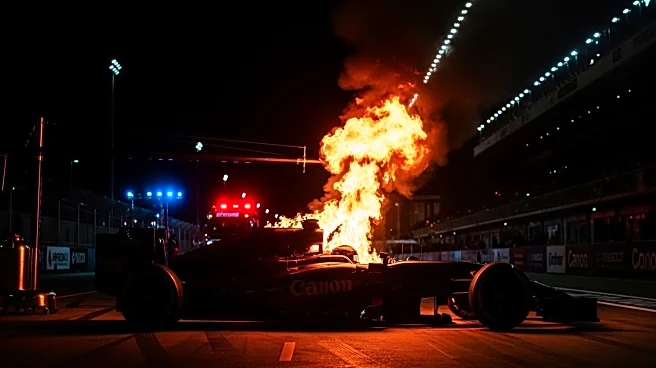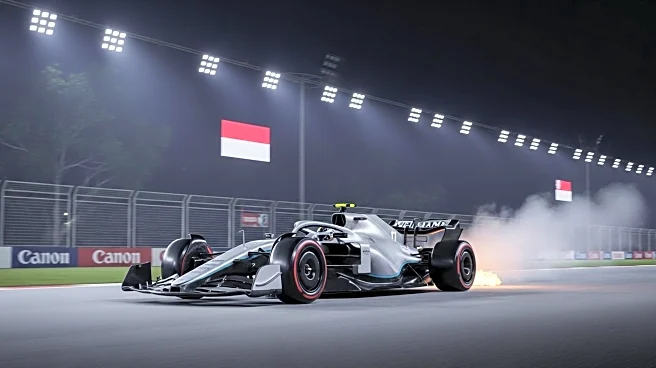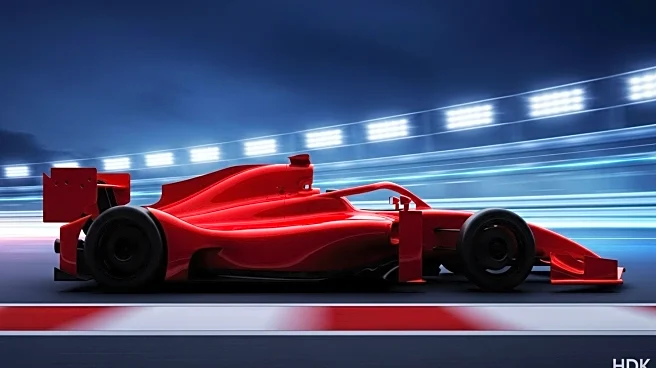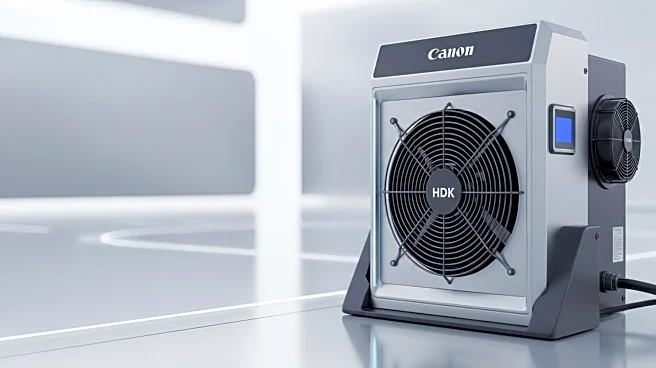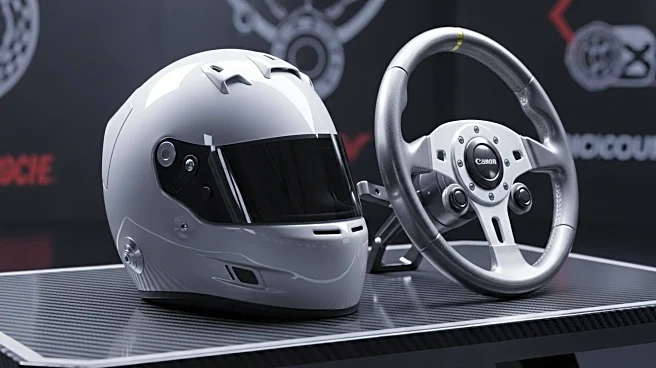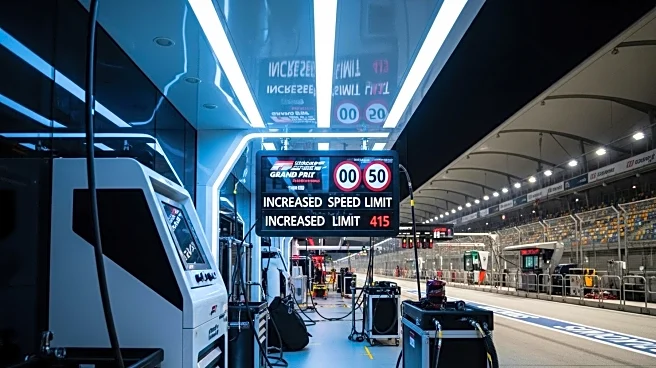What's Happening?
During the Singapore Grand Prix, Alex Albon's Williams F1 car caught fire in the pitlane, forcing the team to abandon the FP1 session. The fire appeared to originate from the rear brakes, causing thick smoke to pour from the car. Williams mechanics attempted to extinguish the flames using CO2 extinguishers. The incident led to significant damage to the car's rear-end components, and Albon was unable to continue the session. The team is assessing the damage and potential impacts on the rest of the weekend. The fire was attributed to a hardware problem on the rear brakes, similar to an issue experienced by Carlos Sainz in Austria.
Why It's Important?
The fire incident highlights the challenges faced by F1 teams in ensuring the reliability and safety of their vehicles. It underscores the importance of rigorous testing and maintenance to prevent such occurrences. The incident could impact Williams' performance in the Singapore GP, affecting their standings and strategy. It also raises concerns about the safety protocols in place during races and the need for quick response to emergencies. The situation may lead to increased scrutiny of brake systems and other critical components in F1 cars.
What's Next?
Williams is expected to conduct a thorough investigation into the cause of the fire and implement measures to prevent future incidents. The team will work to repair the damage and ensure Albon's car is ready for the next session. The incident may prompt other F1 teams to review their safety protocols and component reliability. The FIA may consider additional regulations or guidelines to enhance safety during races. The focus will be on minimizing disruptions and ensuring the safety of drivers and crew.
Beyond the Headlines
The incident raises questions about the technological advancements in F1 and the balance between performance and safety. It highlights the need for continuous innovation and improvement in vehicle design and engineering. The situation also reflects the pressures faced by teams to perform at the highest level while managing risks. The broader implications could influence future developments in motorsport technology and safety standards.

